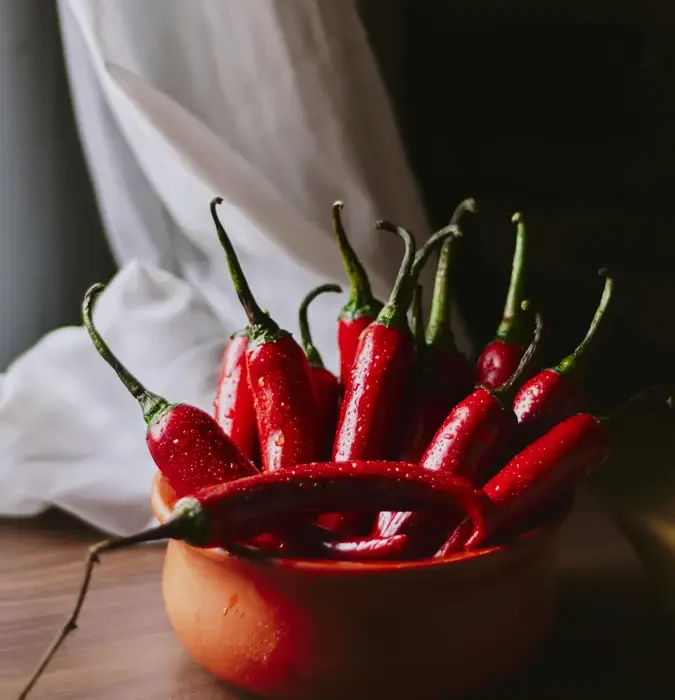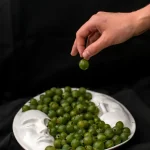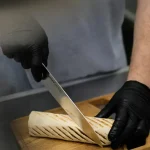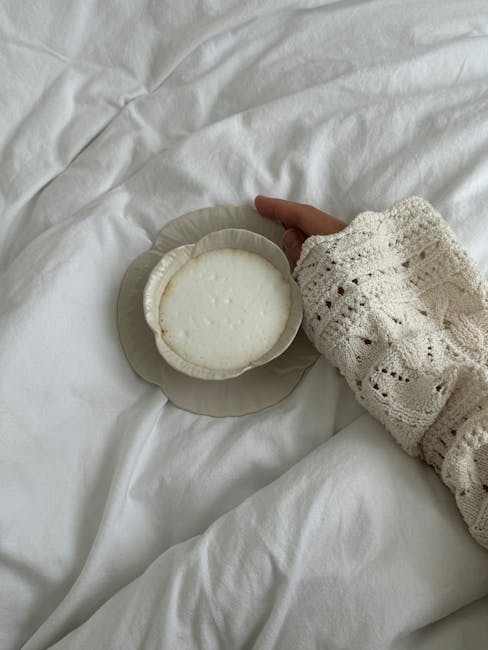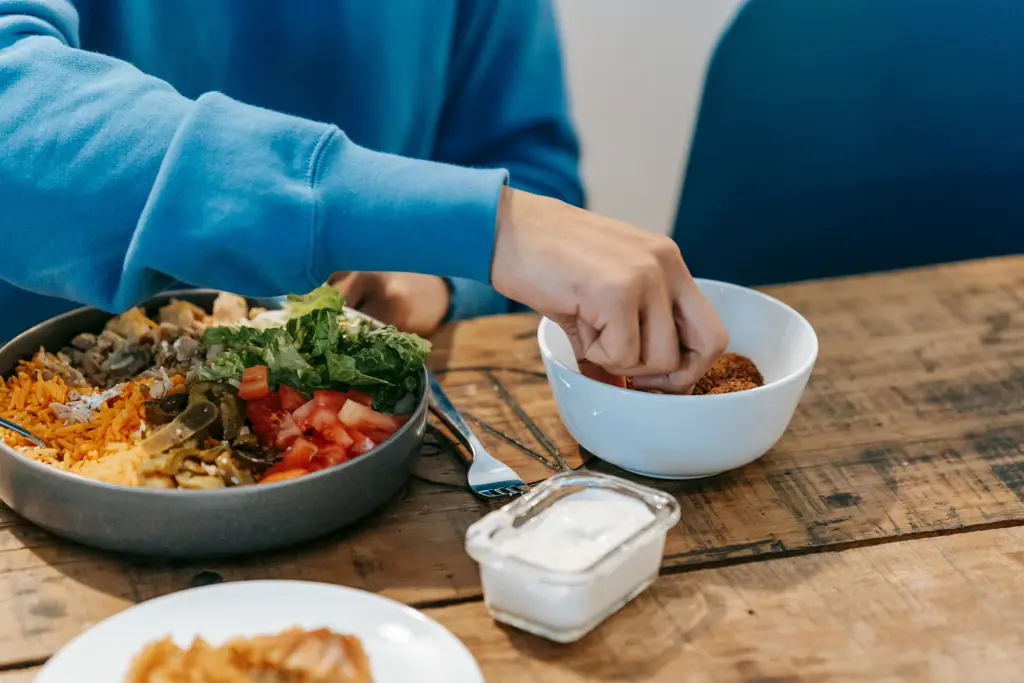Prepare to embark on a culinary journey to the heart of the Middle East and beyond, where layers of flaky filo pastry, sweet honey syrup, and chopped nuts intertwine to create a symphony of flavor: baklava. This isn’t just a dessert; it’s a cultural treasure, a testament to centuries of culinary tradition and exchange. Its origins are shrouded in some mystery, with claims ranging from ancient Assyria to the Ottoman Empire. While pinpointing the exact birthplace remains elusive, its widespread presence across the Mediterranean, the Middle East, and even parts of Central Asia speaks volumes about its enduring popularity and adaptability.
The history of baklava is as rich and layered as the dessert itself. Some historians believe variations of baklava existed even before the Ottoman Empire, possibly influenced by ancient Greek and Roman pastries. However, it was during the Ottoman era (1299-1922) that baklava truly flourished, evolving into the intricate and decadent treat we know today. Royal kitchens played a significant role in its refinement, resulting in recipes that were passed down through generations, often guarded as closely held family secrets. The sheer number of variations across different regions – from the intensely nutty baklava of Turkey to the richer, more syrupy versions found in Greece – highlights its adaptability and the creativity it has inspired.
Baklava’s cultural significance transcends mere culinary enjoyment. It’s a staple at celebrations, festivals, and religious holidays across numerous cultures. It’s often served at weddings, birthdays, and significant religious events, symbolizing prosperity, abundance, and sweetness in life. The meticulous process of making baklava, requiring patience, precision, and attention to detail, also reflects the value placed on craftsmanship and tradition. Interestingly, the global baklava market is estimated to be worth billions of dollars, showcasing its continued relevance and appeal in a modern world. The sheer number of recipes available online – millions, if not more, are readily accessible – demonstrates its enduring global popularity and the continuing quest for the perfect baklava experience.
This recipe aims to bring you closer to that perfect experience. We’ll guide you through the process of creating a truly homemade baklava, emphasizing the techniques and ingredients that elevate this dessert from good to exceptional. While the traditional method is time-consuming, the reward—the intoxicating aroma of warm spices and the satisfying crunch of perfectly layered filo—is well worth the effort. Get ready to experience the magic of baklava, a sweet treat with a history as captivating as its taste.
Ingredients and Measurements
Creating the perfect baklava hinges on precision in both ingredient quality and measurement. This recipe calls for specific ingredients, and substituting without careful consideration can significantly alter the final product’s texture and flavor. We’ll break down each ingredient, highlighting crucial points for success.
Phyllo Dough (Filo): You’ll need one 16-ounce package of high-quality phyllo dough. This is crucial. Don’t skimp here! Frozen phyllo is readily available in most supermarkets, and is essential for achieving the delicate, paper-thin layers characteristic of baklava. Ensure the dough is completely thawed according to package instructions before use. Working with partially thawed phyllo is incredibly difficult and will yield uneven results. Keep the thawed phyllo covered with a damp cloth to prevent it from drying out. This is paramount as dry phyllo becomes brittle and cracks easily.
Clarified Butter (Ghee): We use 1 ½ cups (3 sticks) of clarified butter, or ghee. Clarified butter has a higher smoke point than regular butter, which is essential for achieving a deep golden-brown color and crisp texture without burning. If you don’t have ghee, you can make your own by slowly melting butter and then removing the milk solids and foam. Using regular butter will result in a less crisp, potentially burnt baklava. The clarified butter imparts a rich, nutty flavor that complements the sweetness of the syrup perfectly.
Nuts: This recipe utilizes 2 cups of finely chopped walnuts and 1 cup of finely chopped pistachios. The quality and fineness of the chop are paramount. Use fresh, high-quality nuts for the best flavor and texture. Coarsely chopped nuts will create uneven layers and pockets of uncooked nuttiness. Process them in a food processor until finely chopped but not pulverized. A mixture of nuts helps to create more depth of flavor.
Sugar: We require 1 ½ cups of granulated sugar for the syrup. Do not substitute with other types of sugar, as this will impact the syrup’s consistency and final texture. Granulated sugar dissolves evenly and creates the ideal sweetness level. Using brown sugar, for instance, will alter the flavor profile considerably.
Honey: Add ½ cup of honey to the syrup. Honey adds complexity and depth to the sweetness of the sugar. Choose a light-colored honey for a more balanced sweetness. Darker honeys can overpower the other flavors. The honey contributes to the baklava’s characteristic rich and complex flavor profile.
Water: The syrup requires 1 cup of water. This is the base for the syrup and is crucial to achieving the correct consistency. Use filtered water if possible for the purest taste and to prevent any mineral deposits from affecting the syrup’s clarity.
Lemon Juice: A tablespoon of fresh lemon juice is added to the syrup. This element adds a touch of brightness and acidity that balances the sweetness and prevents the syrup from becoming cloying. Freshly squeezed lemon juice is recommended over bottled juice for a more vibrant flavor. It also helps to prevent crystallization of the sugar in the syrup.
Cinnamon: A teaspoon of ground cinnamon is used to add warmth and spice to the filling. You can adjust this according to your preference, but a small amount makes a big difference. Use freshly ground cinnamon for the best flavor.
Phyllo Dough Preparation
Working with phyllo dough can seem daunting, but with a little patience and the right technique, you’ll be creating flaky, golden layers in no time. This section details the preparation of your phyllo dough, ensuring your baklava turns out perfectly.
Before you begin: The most crucial step is to understand that phyllo dough is incredibly delicate and dries out quickly. Keep the unused sheets covered tightly with a slightly damp kitchen towel or plastic wrap to prevent them from drying out and becoming brittle. A slightly damp environment is key to maintaining its pliability.
Thawing the Phyllo: If using frozen phyllo, allow it to thaw completely in its original packaging in the refrigerator for at least 24 hours. This slow thaw prevents cracking and tearing. Never attempt to thaw phyllo at room temperature; this will cause it to dry out irreparably.
Choosing Your Phyllo: You can find phyllo dough in most well-stocked grocery stores, usually in the freezer section. Look for a brand that’s known for its quality and thinness. Thinner phyllo will result in a lighter, flakier baklava. The package should typically contain 16-18 sheets.
Preparing the Work Surface: You’ll need a clean, flat surface to work on. Lightly dust your work surface with flour. This prevents the phyllo sheets from sticking. However, be cautious not to use too much flour, as excess flour can make the baklava tough.
Working with the Phyllo: Gently remove the phyllo sheets from the packaging, one at a time. Work quickly and efficiently. Lay each sheet down on your floured surface. If a sheet tears, don’t despair! You can often piece it back together or use the larger pieces and discard the smaller ones. The beauty of baklava is that it’s forgiving.
Brushing with Clarified Butter (or Oil): This is where the magic happens! You will need approximately 1 cup of clarified butter (or high-quality olive oil for a vegetarian option). Use a pastry brush to lightly brush each sheet of phyllo with melted clarified butter (or oil) before layering it into your baklava pan. This ensures that each layer remains separate and contributes to the incredibly crisp texture. Don’t be stingy with the butter, but avoid over-saturating the phyllo; this can make the baklava greasy.
Stacking the Phyllo: Once you have brushed the first sheet, carefully lay the second sheet on top, brushing it with butter as well. Repeat this process until you have used all your phyllo sheets. Remember to keep the unused sheets covered with a damp cloth throughout the entire process. The layering is crucial for achieving the signature baklava texture.
Important Note: If you find the phyllo dough becoming too dry, lightly spritz it with water from a spray bottle. This will help to restore its flexibility. Do not soak the phyllo; simply mist it lightly.
With your phyllo dough prepared, you’re ready to move on to the next exciting step – creating the delicious nut filling for your baklava!
Nut Mixture Preparation
The heart of any exceptional baklava lies in its rich and flavorful nut mixture. This section details the preparation of a classic combination, but feel free to experiment with your favorite nuts and spices. Consistency is key; a finely ground mixture ensures even distribution throughout the layers of phyllo pastry.
For this recipe, we’ll be using a combination of walnuts and pistachios, offering a delightful balance of texture and taste. Begin by measuring out your ingredients precisely. Accuracy is paramount in baking; even small variations can affect the final outcome. We’ll need:
- 1 cup shelled walnuts, coarsely chopped
- 1/2 cup shelled pistachios, coarsely chopped
- 1/2 cup granulated sugar
- 1 teaspoon ground cinnamon
- 1/2 teaspoon ground cloves (optional, for a warmer spice note)
- 1/4 teaspoon ground nutmeg (optional, for a subtle warmth)
Begin by toasting the nuts. This crucial step enhances their flavor and creates a more complex aroma. Spread the walnuts and pistachios in a single layer on a baking sheet. Roast them in a preheated oven at 325°F (160°C) for 8-10 minutes, or until lightly fragrant and slightly browned. Keep a close eye on them to prevent burning. Remove from the oven and let them cool completely before proceeding.
Once the nuts are cool, use a food processor to finely grind them. Do not over-process; you want a coarsely ground mixture, not a nut butter. Pulse the nuts in short bursts, checking the consistency frequently. If you don’t have a food processor, you can use a sturdy mortar and pestle, but this will be a more time-consuming process. Aim for a texture where you can still see small pieces of nuts, but the mixture is relatively uniform.
In a medium bowl, combine the ground nut mixture with the granulated sugar, cinnamon, cloves (if using), and nutmeg (if using). Mix thoroughly to ensure even distribution of the spices. The sugar will help to bind the nuts and create a cohesive filling. Taste the mixture; you might want to adjust the amount of sugar or spice to your preference. If it seems too dry, you can add a teaspoon or two of melted butter to help bind everything together.
Store the nut mixture in an airtight container at room temperature until ready to use. This can be prepared a day or two in advance, allowing the flavors to meld and deepen. This step-by-step process will yield a nut mixture of exceptional quality, contributing significantly to the overall deliciousness of your homemade baklava.
Important Note: When choosing your nuts, select high-quality, fresh ingredients. The flavor of your nut mixture will directly impact the taste of your baklava. Store any leftover nut mixture in an airtight container in the refrigerator for up to a week.
Syrup Preparation
The success of your baklava hinges significantly on the quality of its syrup. A well-made syrup is fragrant, subtly sweet, and possesses the perfect balance of viscosity to soak into the layers of phyllo without becoming overly saturated or watery. This recipe focuses on creating a luxurious, light syrup that complements the richness of the nuts and butter.
Ingredients:
- 2 cups granulated sugar
- 1 cup water
- 1/2 cup honey (preferably a light-colored variety like clover honey)
- 1/4 cup fresh lemon juice (about 1 large lemon)
- 1 cinnamon stick (about 3 inches long)
- 4 whole cloves
- Optional: 1/4 teaspoon of cardamom pods, lightly crushed
Instructions:
1. Combining Ingredients: In a medium-sized saucepan, combine the granulated sugar, water, honey, lemon juice, cinnamon stick, and cloves. If using, add the cardamom pods at this stage. Ensure the sugar is completely dissolved before proceeding. This is crucial to prevent crystallization and a grainy syrup.
2. Gentle Heating and Simmering: Place the saucepan over medium heat. Stir gently and continuously until the sugar dissolves completely. Once dissolved, bring the mixture to a gentle simmer. Do not boil aggressively; a slow simmer is key to developing a rich flavor and the desired texture.
3. Simmering Time: Reduce the heat to low and let the syrup simmer gently for approximately 20-25 minutes. Do not stir frequently during this phase; occasional gentle swirling is sufficient. The syrup should gradually thicken and become slightly clearer. You’ll notice a change in its consistency – it will coat the back of a spoon more readily as it simmers.
4. The Thread Test: To check for doneness, take a small spoonful of syrup and let it cool slightly. Place it between your thumb and forefinger. If you can gently pull the syrup into a thin thread that breaks, then it’s ready. This is a crucial step to ensure perfect consistency. Avoid over-simmering, as this can lead to a syrup that is too thick and sticky.
5. Cooling and Straining: Remove the saucepan from the heat. Carefully remove the cinnamon stick and cloves using tongs or a slotted spoon. This prevents any specks from ending up in your baklava. Allow the syrup to cool completely before pouring it over your freshly baked baklava. Cooling allows the syrup to fully develop its flavor and prevents it from making the baklava soggy.
Professional Recommendations:
- Use high-quality honey for the best flavor.
- Freshly squeezed lemon juice provides a brighter, more vibrant flavor than bottled juice.
- Adjust the simmering time based on your stove’s heat and desired consistency. It’s always better to slightly under-simmer than over-simmer.
- Pour the syrup over the warm baklava for optimal absorption.
- Allow the baklava to absorb the syrup completely before serving (at least 4 hours, preferably overnight).
Following these steps will ensure you create a delicious syrup that perfectly complements your homemade baklava and elevates it to a truly exceptional treat.
Assembly Instructions
Assembling baklava is a delicate process requiring patience and precision. The success of your baklava hinges on creating even layers of phyllo, ensuring proper buttering, and achieving a consistent nut filling. This section will guide you through each step, ensuring a beautiful and delicious result.
Prepare your workspace: Before you begin, ensure your workspace is clean and organized. Have all your ingredients readily available, including the phyllo dough, melted butter, nut filling, and a pastry brush. A large, flat surface like a clean countertop or a large baking sheet is ideal. Keep the phyllo dough covered with a damp kitchen towel to prevent it from drying out. This is crucial to maintaining its flexibility and preventing cracking.
Layering the Phyllo: Gently unfold the first sheet of phyllo dough and lay it flat on your work surface. Brush it evenly with melted butter, ensuring complete coverage. Repeat this process with 5 more sheets of phyllo, creating a stack of 6 buttered sheets. Use a light hand when brushing the butter; you want to coat the phyllo, not soak it. Excess butter can lead to a greasy baklava.
Adding the Nut Filling: Spread one-third of the prepared nut filling evenly over the buttered phyllo layers. Try to create an even layer about 1/4 inch thick. Avoid piling the filling too high in the center, as this can cause uneven baking.
Repeating the Layers: Carefully lay another 6 sheets of phyllo on top of the nut filling, buttering each sheet as you did before. Repeat this process one more time, adding another layer of nut filling and then 6 more buttered sheets of phyllo. Ensure the top layer of phyllo is completely buttered.
Scoring and Cutting: Using a sharp knife, score the baklava into diamond shapes or squares. Do not cut all the way through the phyllo; just score the surface. This allows the baklava to be easily separated after baking.
Optional Topping: For added visual appeal, you can sprinkle a little extra chopped nuts or a dusting of powdered sugar over the top layer before baking. This is entirely optional, but it adds a nice touch.
Baking Preparation: Carefully transfer the assembled baklava to a baking sheet. Use a large, sturdy baking sheet that can comfortably accommodate the baklava. A baking sheet with sides is recommended to prevent the syrup from spilling over.
Important Note: Work quickly and efficiently to avoid the phyllo dough drying out. If you find the dough becoming difficult to work with, cover it with a damp cloth between layers.
Following these instructions carefully will ensure that your homemade baklava is not only delicious but also visually stunning. Remember, patience and attention to detail are key to achieving the perfect baklava.
Baking Instructions
Baking baklava requires patience and attention to detail. The key to achieving perfectly crisp phyllo and a lusciously sweet syrup is careful layering and precise baking. This section will guide you through the process step-by-step.
Preheat your oven to 350°F (175°C). This is crucial for even baking. Using a convection oven is recommended, but a standard oven will work perfectly fine. Ensure your oven is properly preheated before placing the baklava inside; this prevents uneven browning and ensures the phyllo cooks through properly.
Prepare your baking pan: Generously grease a 9×13 inch baking pan with melted unsalted butter. This prevents sticking and ensures easy removal once baked. Don’t skimp on the butter! The butter adds flavor and helps create a beautiful, golden-brown crust.
Layering the phyllo: This is the most time-consuming part, but also the most important. Work quickly and efficiently to prevent the phyllo sheets from drying out. Unfold one sheet of phyllo and carefully lay it in the prepared pan. Brush the top with melted butter, ensuring even coverage. Repeat this process, layering 12 sheets of phyllo, brushing each with butter. Overlap the sheets slightly for better coverage and to prevent gaps.
Adding the nut filling: Evenly spread half of the prepared nut mixture (from the ingredients section) over the layered phyllo. Ensure the filling is evenly distributed to avoid uneven baking and to ensure every bite has the perfect amount of nuts and sweetness.
Layering the remaining phyllo: Repeat the layering process with another 12 sheets of phyllo, brushing each with melted butter. The top layer should be brushed generously with butter to achieve a beautiful golden-brown finish. Use a pastry brush for even distribution of the butter.
Scoring and baking: Using a sharp knife, score the baklava into diamond shapes or squares. This allows for easy serving after baking. Don’t cut all the way through; just score the top layer to guide your cuts once baked. Bake for 45-50 minutes, or until the baklava is deeply golden brown and the filling is fragrant. Keep an eye on it to prevent burning. If the top is browning too quickly, loosely tent it with aluminum foil.
Cooling and syruping: Remove the baklava from the oven and let it cool completely in the pan before pouring the syrup over it. This is crucial; pouring the syrup onto hot baklava will result in a soggy dessert. Once completely cool, pour the prepared syrup evenly over the baklava, ensuring all the pieces are coated. Allow it to soak in for at least 4 hours, or preferably overnight, for the best results. The baklava will continue to absorb the syrup as it sits, resulting in a more intensely flavored dessert.
Serving: Once the syrup has been completely absorbed, carefully cut the baklava along the scored lines and serve. Enjoy your delicious homemade baklava!
Recommendations for The Best Homemade Baklava Recipe
This decadent baklava is best enjoyed when served at room temperature, allowing the layers of phyllo to soften slightly and the honey syrup to fully permeate the nuts. Allow the baklava to rest for at least 2-3 hours after baking before serving to ensure optimal flavor and texture. This allows the syrup to be absorbed properly and prevents a soggy outcome.
For the most impressive presentation, cut the baklava into neat diamond shapes or squares while it’s still warm, using a sharp knife. This will ensure clean cuts and prevent the phyllo from crumbling. Wipe the knife clean between each cut to maintain sharpness and prevent sticking.
Serving suggestions are abundant! Baklava pairs beautifully with a scoop of vanilla ice cream, a dollop of whipped cream, or a drizzle of extra honey. The sweetness of the baklava complements the coolness of the ice cream perfectly, creating a delightful contrast in temperatures and textures. Consider offering a small bowl of chopped pistachios or walnuts on the side for those who desire an added crunch.
To enhance the overall dining experience, consider serving your baklava with a cup of strong Turkish coffee or a glass of sweet dessert wine. The rich flavors of the coffee or wine will complement the sweetness of the baklava, creating a truly unforgettable dessert experience. A light and refreshing fruit salad could also provide a nice contrast to the richness of the baklava.
Storage is crucial for maintaining the quality of your baklava. Store leftover baklava in an airtight container at room temperature for up to 3 days. For longer storage (up to a week), refrigerate the baklava in an airtight container. To refresh the baklava after refrigeration, let it sit at room temperature for about 30 minutes before serving. Do not freeze baklava as this can significantly impact the texture.
Nutritional Information (per serving, approximate – this will vary based on specific ingredients and portion size):
Calories: Approximately 350-450 calories
Fat: High in fat due to nuts and butter.
Sugar: Very high in sugar due to honey syrup and phyllo dough.
Note: This is an estimate. The exact nutritional content will depend on the specific ingredients used and the size of the serving.
Remember that baklava is a rich and indulgent dessert, best enjoyed in moderation. Enjoy!

